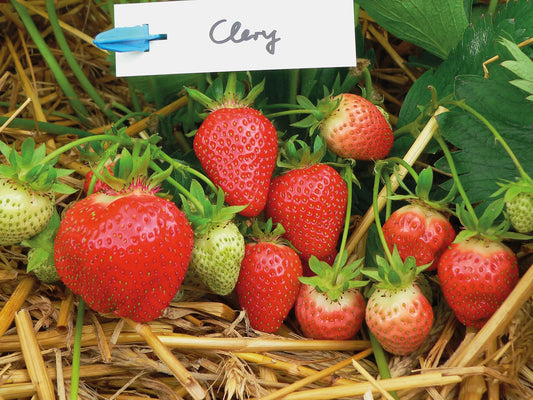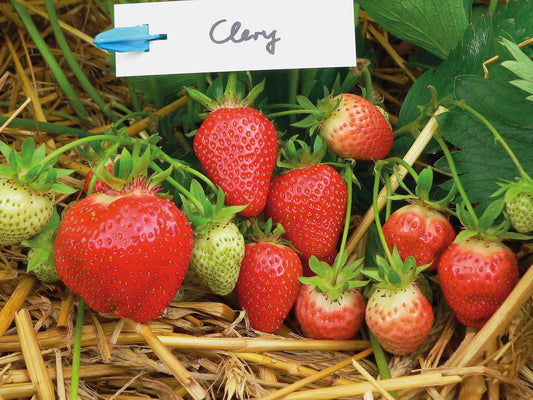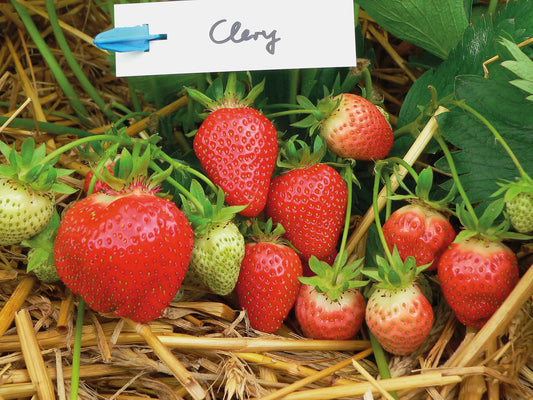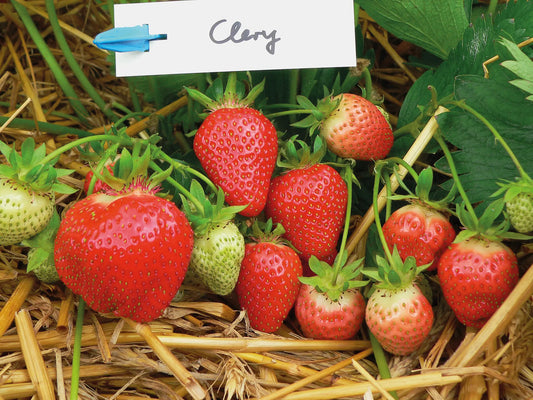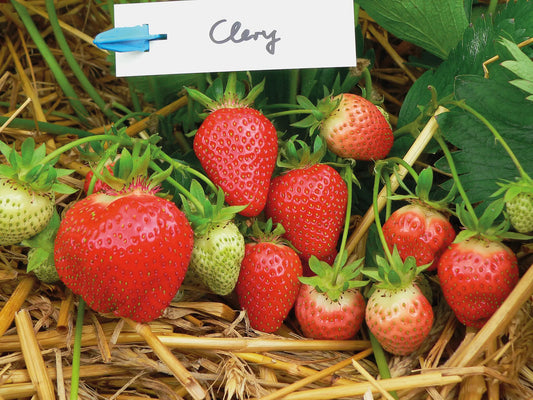-
Delivery from 10 plants to France, Switzerland and Europe
Delivery method -
Strawberry Plant Wholesale Supplier
About Us -
Quality Strawberry Plants
Strawberry technical itinerary -
Secure payment
Our Payment Terms
Clery Frigo A Strawberry Plant
Clery Frigo A Strawberry Plant
Price per unit (€ excluding VAT) excluding shipping. Our prices are based on volume. We offer you the best option based on your needs.
 - Add the desired date to your quote request
- Add the desired date to your quote request
- Buy now and get it delivered when you're ready to plant
- Delivery from 10 plants to France, Switzerland and Europe
Couldn't load pickup availability
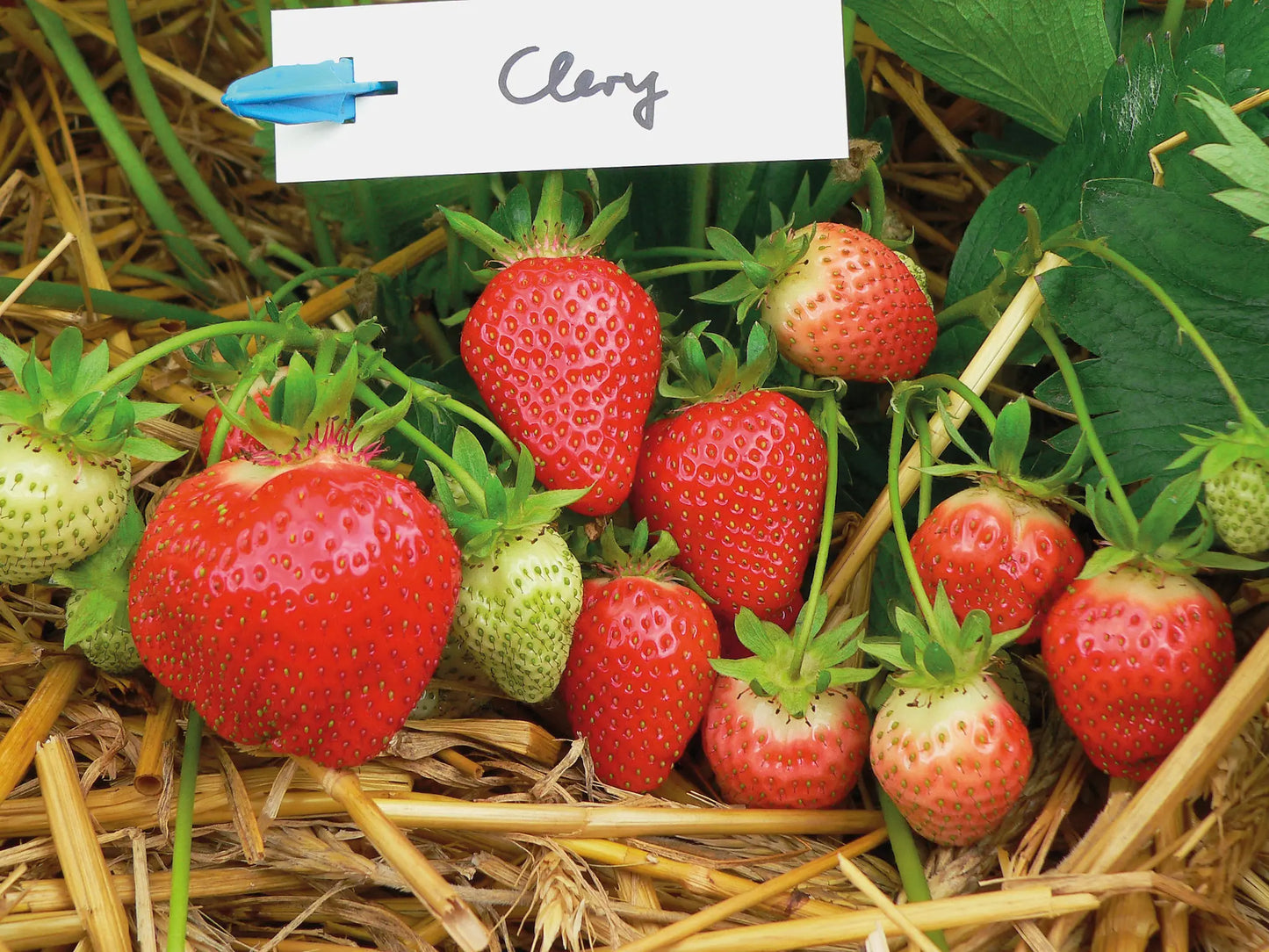
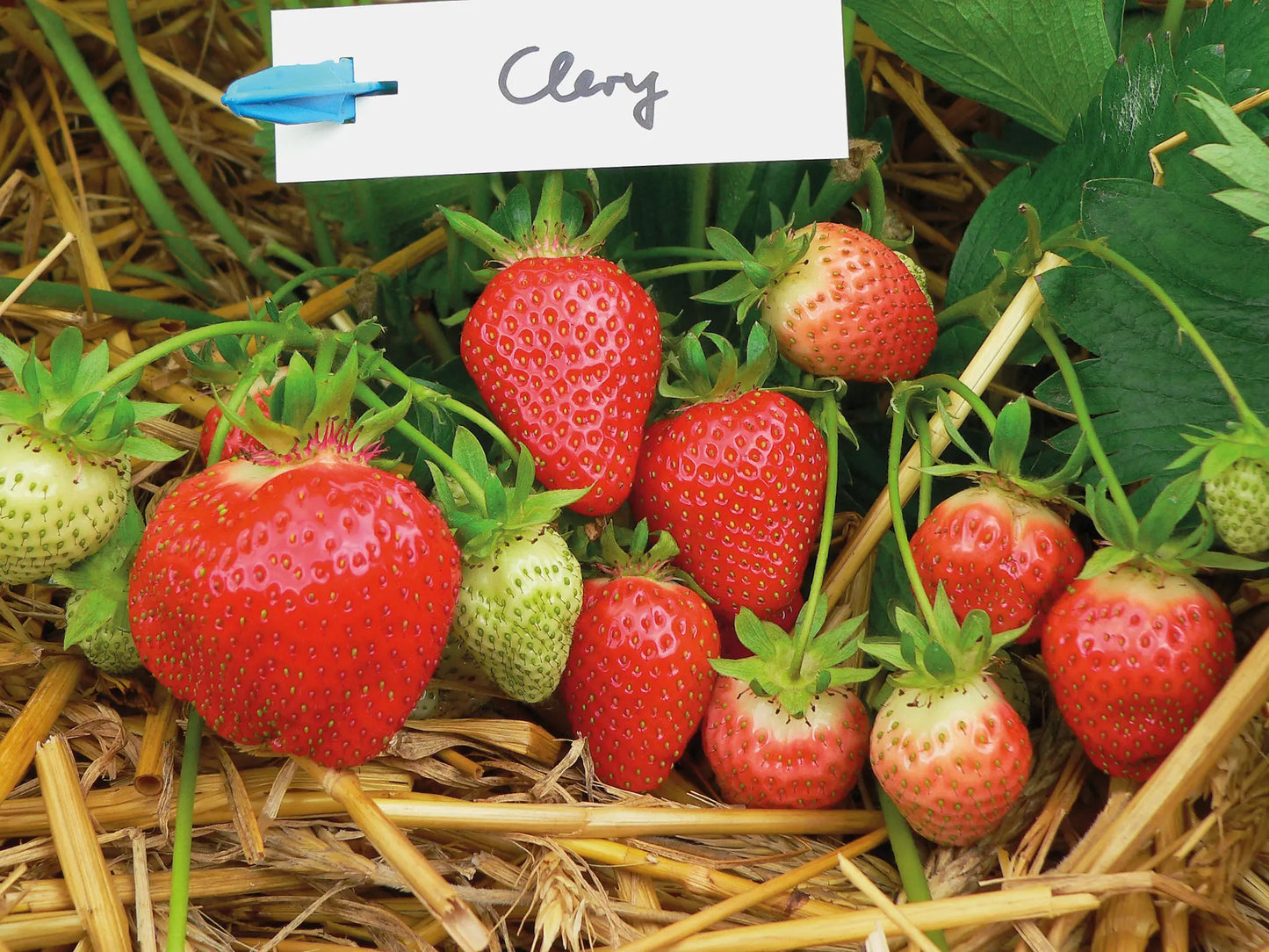
Collapsible content
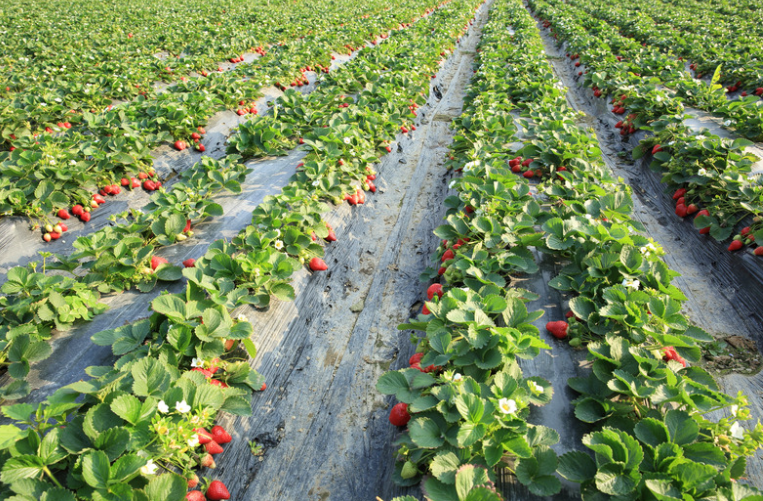
Strawberry Plant Buying Guide: What Type of Plants? For What Market Opportunity?
Which format should you choose: refrigerated, fresh, tray-plants, waiting bed, or plugs? Compare yields, costs, and harvest times at a glance.
Download the PDF guide (13 pages)
Why read this guide?
- Comparison tables: yield (300–600 g/plant), cost & labor.
- Reservation/delivery calendar for each format.
- Minimum order: 20 to 1,000 plants depending on the type.
- Full-field vs. above-ground case studies to maximize margin.
Overview of the 5 professional formats
Detailed comparison of formats
| Format | Yield (g/plant) |
Harvest time | Min. order | Average cost |
|---|---|---|---|---|
| Fridge | 250 – 400 | 120 days | 20 plants | 0.20 – 0.45 € |
| Costs | 280 – 420 | 140 days | 200 plants | 0.20 – 0.45 € |
| Tray plant | 400 – 600 | 90 days | 500 plants | 0.75 – 0.80 € |
| Waiting Bed | 300 – 500 | 105 days | 500 plants | 0.50 – 0.60 € |
| Motte | 230 – 350 | N+1 | 1,000 plants | 0.35 – 0.50 € |
Delivery schedule
| Plant type | Jan | Feb | Mar | Apr | May | Jul | Jul | Aug | Sep | Oct | Nov | Dec |
|---|---|---|---|---|---|---|---|---|---|---|---|---|
| Fridge | ||||||||||||
| Tray plants | ||||||||||||
| Waiting Bed | ||||||||||||
| Motte | ||||||||||||
| Costs |
Which format for which scenario?
Full field controlled budget
Fridge or Fresh : cost 2 x lower than tray plants, planting flexibility.
Above ground in greenhouse
Tray-plants : harvest 90 days after planting, uniform size, reduced labor.
Late planting
Mottes : planting July–August, rapid recovery, harvest the following year.
Ready to plan your plantings?
Download the complete guide Request a quoteFrequently Asked Questions
Is the guide free?
Yes, no fees or obligation to purchase.
How to download it?
Click the button “Download the guide” ; the PDF opens immediately.
Can I request a personalized quote?
Of course: write to us at contact@fraisiverse.com and an agronomist will respond to you within 24 hours.
Choosing the right strawberry varieties for your plot
Extend your harvest season by up to 5.5 months with our "early + season + everbearing" method. Compare 78 cultivars, sizes, and markets.
Download the PDF guide (17 pages)
4 axes to decide quickly
- Harvest Window : Early, Seasonal, or Everbearing? Combine them for 5.5 months .
- Commercial outlet : direct sales, long circuit, processing or freezing.
- Type of plants : fridge, fresh, root ball, tray plants… adapt your investments and your schedule.
- Growing conditions : open field, soilless, greenhouse; target consistent yield and size.
Axis 1: Select your harvest window
Example of recommended mix:
- Ciflorette (early) → Rubis des Jardins (season) → Charlotte (remontant).
- 5.5 months of continuous production, ideal for direct sales.
Axis 2: Sell at the right market
Direct sales
Ciflorette, Charlotte, Mara des Bois: premium taste sought after by consumers.
Long circuit / GMS
Magnum, Clery, Dream: uniform size, 95% class 1 fruit.
Transformation
Darselect, Mara des Bois – high sugar content and stable aroma.
Freezing
Honeoye, Belrubi – firm flesh, keeps well in the cold.
Axis 3: Choose the right type of plants
| Kind | Reservation | Delivery | Highlights |
|---|---|---|---|
| Fridge | All year round | Dec. → Aug. | Flexibility & price |
| Tray plants | Feb. → June | Nov. → Apr. | Above ground, harvest 90 days after planting |
| Motte | Sep. → May | Jul. → Sep. | Ideal for open fields, harvest N+1 |
| Costs | Feb. → Aug. | Sep. → Nov. | Young plants, rapid recovery |
Axis 4: Optimize your technical constraints
Tray plants guarantee +25% yield and simplified harvesting above ground; ideal for mechanizing your production and ensuring consistent size.
Frequently Asked Questions
Is the guide really free?
Yes, with no cost or obligation to purchase.
How to download it?
Just click the button “Download the guide” at the top of the page; the PDF opens immediately.
Can I request a personalized quote?
Of course: contact us via our contact page .
When to plant? When to harvest?
Do you want to start a strawberry farm but don't know when to reserve your plants, when to plant them or even harvest them?
Because we love 🍓 (with just a little sugar), we're going to do the work for you. On this page, you'll find the growing steps for each type of strawberry plant. When to order? What is the delivery period? When to plant? And finally, when to harvest?
Production Calendar - Frigo Strawberry Plants
| Production Calendar - Frigo Strawberry Plants | ||||||||||||||||||||||||
|---|---|---|---|---|---|---|---|---|---|---|---|---|---|---|---|---|---|---|---|---|---|---|---|---|
| Jan | Feb | Mar | Apr | May | Jun | Jul | Aug | Sep | Oct | Nov | Dec | |||||||||||||
| Reservation | ||||||||||||||||||||||||
| Deliverable | ||||||||||||||||||||||||
| Recommended planting | ||||||||||||||||||||||||
| Harvest | ||||||||||||||||||||||||
Production Calendar - Fresh Bare-Root Strawberry Plants
| Production Calendar - Bare Root Strawberry Plants | ||||||||||||||||||||||||
|---|---|---|---|---|---|---|---|---|---|---|---|---|---|---|---|---|---|---|---|---|---|---|---|---|
| Jan | Feb | Mar | Apr | May | Jun | Jul | Aug | Sep | Oct | Nov | Dec | |||||||||||||
| Reservation | ||||||||||||||||||||||||
| Deliverable | ||||||||||||||||||||||||
| Recommended planting | ||||||||||||||||||||||||
| Harvest | ||||||||||||||||||||||||
Production Calendar - Strawberry Plants Plugs
| Production Calendar - Strawberry Plants Motte | ||||||||||||||||||||||||
|---|---|---|---|---|---|---|---|---|---|---|---|---|---|---|---|---|---|---|---|---|---|---|---|---|
| Jan | Feb | Mar | Apr | May | Jun | Jul | Aug | Sep | Oct | Nov | Dec | |||||||||||||
| Reservation | ||||||||||||||||||||||||
| Deliverable | ||||||||||||||||||||||||
| Recommended planting | ||||||||||||||||||||||||
| Harvest | ||||||||||||||||||||||||
Production Calendar - Strawberry Plant Tray
| Production Calendar - Strawberry Plants Motte | ||||||||||||||||||||||||
|---|---|---|---|---|---|---|---|---|---|---|---|---|---|---|---|---|---|---|---|---|---|---|---|---|
| Jan | Feb | Mar | Apr | May | Jun | Jul | Aug | Sep | Oct | Nov | Dec | |||||||||||||
| Reservation | ||||||||||||||||||||||||
| Deliverable | ||||||||||||||||||||||||
| Recommended planting | ||||||||||||||||||||||||
| Harvest | ||||||||||||||||||||||||
Our Growing Guides by Plant Type / Our Growing Tips
Our online advisor: Fraisibot
Our technical itineraries by type of strawberry plant:
Technical Itinerary for Growing Strawberries from Frigo Plants
Technical Itinerary for Growing Strawberries from Plug/Pod Plants
Technical Instructions for Growing Strawberries from Tray or Mini Tray Plants
Technical Guide for Growing Strawberries from Bare-Root Fresh Strawberry Plants
Technical Instructions for Growing Strawberries from Waiting Bed Plants
All our growing tips for planting strawberries:
Strawberry Plants: Soil Preparation and Planting
Soil preparation for strawberry growing, planting techniques, and optimizing strawberry yield.
Best Practices for Irrigation and Fertilization of Strawberry Plants
Efficient irrigation systems, frequency and quantity of watering, types of fertilizers and application times, signs of nutritional deficiencies, growing strawberries in substrate, protection against frost and diseases.
Protection and Prevention of Strawberry Diseases and Pests
The main diseases and pests affecting strawberries, as well as effective methods for their prevention and treatment, including biological control and the use of resistant varieties. It provides practical advice for maintaining healthy and productive strawberry crops.
Succeeding in Strawberry Farming: Costs, Business Strategy and Subsidies
Growing strawberries requires significant initial and ongoing costs, but with effective marketing strategies and sustainable practices, growers can maximize their profits while contributing positively to the environment. Grants and financial aid are available to support necessary investments and encourage environmentally friendly farming practices.
Maximizing Strawberry Harvest and Storage: A Practical Guide
How to determine the optimal time to harvest strawberries, best practices for minimizing fruit damage during picking, and effective methods for storing and managing unsold strawberries to avoid losses and maximize profitability. It offers practical tips for extending the shelf life of strawberries, including refrigeration, freezing, and dehydration.
Strawberry Growing: Why Stagger Production? Early, Seasonal, Late? How to Choose?
Staggering strawberry production allows for harvests to be spread throughout the season, ensuring optimal fruit quality and increased profitability. Learn about recommended varieties for early, mid-season, and late-season production, as well as best practices for harvesting and storage.
Clery strawberry variety technical sheet
- Remontant: Non-Remontant
- Precocity: Very Early
- Harvest period: Early May to June
- Shape, texture, appearance of the Fruit: Elongated conical
- Fruit color: Bright carmine red
- Taste characteristics: Very good taste quality, intense aroma
- Fruit Size: Very good taste quality, intense aroma
- Disease Resistance: High resistance to foliar and root diseases
- Yield, management and marketing: High productivity. Few deformed fruits.
- Recommended commercial use / marketing channel: Direct sales, Wholesale, Processing
- Our advice: Suitable for both in-ground and above-ground use
Order your professional strawberry plants
Fraisiverse, a specialist wholesale supplier of strawberry plants , offers you the Clery variety, known for its precocity and excellent yield. Our Clery strawberry plants come from specialized nurseries and are rigorously selected for their professional quality. You therefore benefit from reliable, consistent plant material capable of guaranteeing profitable production. Buying your strawberry plants means choosing a product with high potential, delivered quickly throughout France. Take advantage of producer prices , dedicated technical support , careful delivery and personalized advice to ensure your cultivation is a success. Order now or book your planting campaign now . Take advantage of our producer prices and request a free quote today for your professional needs. Trust a partner committed to the success of production strawberries.
Agronomic and varietal characteristics of the Clery strawberry
The Clery strawberry plant stands out as a very early, non-remontant variety , offering a single, significant harvest per season. This characteristic makes it a major asset for professionals wishing to position themselves early on in the fresh market. The plant itself is robust and versatile, adapting to various cultivation methods.
Fruit morphology and quality
Regarding its fruit, the Clery produces strawberries with an elongated, regular conical shape . Their visual appearance is particularly attractive, displaying a bright, vivid carmine red at commercial maturity. This size, considered large, frequently reaches 40 to 50 grams per fruit , with remarkable homogeneity, which minimizes the percentage of deformed fruits. The flesh of the Clery is firm, dense and elastic , with a homogeneous red to light red color inside. In the mouth, it provides a juicy and pleasantly crunchy sensation, offering a perfect balance between sweetness and acidity with an intense aroma and a generally high sugar content .
Technical production itinerary
Soil and climate requirements and location
To fully exploit the potential of the Clery variety, careful cultivation is recommended. This variety prefers well-drained soils, sandy in texture and rich in organic matter . It is essential to ensure an optimal pH, ideally between 6.0 and 6.5 . It is important to note that Clery, like most production strawberries, is not specifically tolerant of highly calcareous soils, which can induce risks of chlorosis.
In terms of planting density, for professional intensive systems it is common to plan for 45,000 to 60,000 plants per hectare .
Fertilization program
An indicative fertilization plan for an open-ground crop suggests annual applications of 80 to 120 kg/ha of nitrogen (N) , 60 to 80 kg/ha of phosphorus (P₂O₅) , and 130 to 180 kg/ha of potash (K₂O) . Ideally, the phosphorus is incorporated in full before planting, while the nitrogen and potash are split: two-thirds before flowering and one-third after harvest, helping to replenish the plants' reserves. Monitoring of trace elements such as magnesium (30-40 kg/ha if the soil is deficient) , iron (to be monitored if the pH is above 7), and boron (1-2 kg/ha in calcareous or poor soils) is also recommended. Incorporating organic amendments, such as 20 to 30 tonnes per hectare of compost or well-rotted manure , is beneficial for soil structure and microbial life.
Water management
Irrigation plays a vital role for Clery, which is particularly sensitive to drought. Regular watering, particularly 30 to 50 mm per week during fruit growth , is essential to ensure optimal development and high yields. Although robust to root diseases, Clery is not tolerant to chronic asphyxiation: prolonged excess watering should therefore be avoided. Its ability to be grown both in the ground and above ground gives farms considerable flexibility.
Yield performance and production schedule
Productive potential
The Clery variety is renowned for its high yield potential , making it one of the most productive seasonal varieties. Under optimal conditions, a single plant can produce between 600 grams and 1 kilogram of strawberries per year . On a per-hectare basis, professional farms can expect production of between 18 and 25 tonnes per hectare under well-managed open-field cultivation , with peaks of up to 30 tonnes per hectare under exceptionally favorable conditions.
A notable economic advantage of the Clery is its excellent rate of first-category (class I) fruit at packaging, which can reach up to 95% for plantings in early March. The waste rate then remains very low, around 4 to 5%. The regularity of the fruit is also remarkable, with an average weight of 30 to 40 grams and a uniform conical shape at the peak of production.
Flowering and harvest calendar
Clery's precocity is one of its major assets. Flowering generally begins in early April, with the main flowering concentrated over 2 to 3 weeks starting in early May. This clustered flowering leads to an equally concentrated and early harvest, generally extending from early May to June. The majority of production, around 70%, is concentrated in a two- to three-week window, usually between week 19 and week 22 (mid-May to the first week of June). In Mediterranean regions, harvesting can start earlier (late March/early April under heated shelter, or early May in open fields), while in more northern or continental regions, it takes place mainly from May to June.
Health protection and varietal resistance
Resistance to pathogens
Clery has good general resistance to foliar and root diseases , which contributes to its hardiness and ease of cultivation. This characteristic makes it a versatile choice for different farms.
However, it is important to note its susceptibility to Xanthomonas fragariae (the agent of bacterial angular leaf spot). No major commercial variety, including Clery, currently has proven genetic resistance to this pathogen. Managing this disease therefore relies on the adoption of healthy plants and rigorous prophylactic measures, such as avoiding overhead irrigation and handling wet foliage.
Bio-aggressor management
Regarding common pests, Clery does not have any specific resistance to thrips, aphids, spider mites, weevils (Anthonomus rubi) or Drosophila suzukii. It is susceptible to thrips like most early varieties, with a recommended intervention threshold of 4 thrips per flower . For aphids and spider mites, regular monitoring and the use of biological control are necessary. Its precocity gives it a slight advantage over Drosophila suzukii, with populations of this pest increasing later in the season. Frequent harvesting and plot sanitation are key practices for all varieties.
Economic profitability and commercial opportunities
Market positioning and commercial quality
Clery is primarily intended for fresh consumption . Its precocity allows it to arrive on the market at the beginning of the season, a strategic positioning to benefit from high sales prices. Its superior taste quality, its intense aroma and its appreciable texture correspond perfectly to the demand of fresh markets, short circuits and large-scale distribution.
Its high firmness and density give the fruit excellent resistance to transport and handling. This ability guarantees very good conservation, even 2 to 3 days after harvest, which is crucial for long distribution circuits. The rate of post-harvest damaged fruit for Clery is estimated between 5 and 10% under optimal conditions, which is significantly lower than the 15-20% observed for more fragile varieties such as Gariguette (data from field observations and not from sources provided directly, but consistent with professional feedback from the sector).
Technological capabilities and cost of plants
Although Clery can be used for processing (particularly in jam or, to a lesser extent, in freezing), the priority remains its use in fresh form. Freezing can alter its texture and color (loss of firmness, slight browning), making it more suitable for coulis, jams or ice cream rather than for consumption as whole thawed fruit. Prices for professional Clery plants range from €0.17 to €0.65 depending on the type and quality of the plant.
Professional feedback
Feedback from professionals confirms Clery as a reliable and profitable variety . It is unanimously praised for its robustness against foliar and root diseases, as well as for its great versatility in cultivation, both in open ground and above ground. Its precocity and high productivity are major assets for harvest planning and farm profitability.
Producers particularly appreciate the firmness of the fruit on sale , its crisp and juicy flesh, and its good shelf life after harvest, which meets the requirements of professional fresh produce circuits and wholesale markets. The regularity of size and the low proportion of downgraded fruit maximize commercial value, allowing producers to benefit from high prices at the start of the season.
To summarize: Our Clery strawberry plants
The Clery variety is an essential reference for strawberry growers looking for a very early, non-remontant strawberry plant, perfectly suited to fresh markets. Thanks to its high yield (up to 25 tonnes/ha), its superior taste quality and its good post-harvest performance, it meets the requirements of professional channels and large-scale distribution. Fraisiverse , a specialist wholesale supplier of strawberry plants, offers you carefully selected Clery plants for successful planting, whether in the ground or in soilless cultivation. The uniform size of the fruits (30 to 50 g), their conical shape, their firmness and their balanced flavor make them a profitable and valuable choice from the start of the season. Choosing Fraisiverse means benefiting from a specialist wholesale supplier of strawberry plants , combining decreasing prices, fast delivery and suitable technical advice. You can buy Clery strawberry plants with complete confidence: our batches are certified, carefully packaged and available in professional volumes. We make it a point of honor to guarantee the sanitary quality of our plants to allow you to grow healthy and productive crops. Whether you are a family farm or a long-supply chain producer, buying Clery strawberry plants from a specialist strawberry plant wholesaler like Fraisiverse ensures responsiveness, performance, and support at every stage. Don't wait any longer to buy Clery strawberry plants and secure your growing plan. We are your specialist strawberry plant wholesaler dedicated to the success of your professional crops.
-
Clery Potted Strawberry Plant
Regular price €0,27 EURRegular priceUnit price / per -
Clery Frigo A- Strawberry Plant
Regular price €0,17 EURRegular priceUnit price / per -
Clery Frigo A++ Strawberry Plant
Regular price €0,33 EURRegular priceUnit price / per -
Clery Frigo A+ Strawberry Plant
Regular price €0,27 EURRegular priceUnit price / per -
Clery Frigo A Strawberry Plant
Regular price €0,19 EURRegular priceUnit price / per -
Clery Tray Strawberry Plant
Regular price €0,65 EURRegular priceUnit price / per






